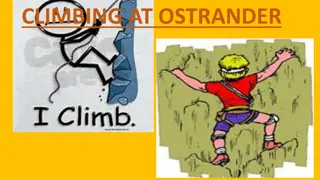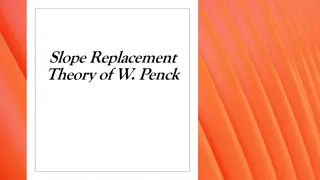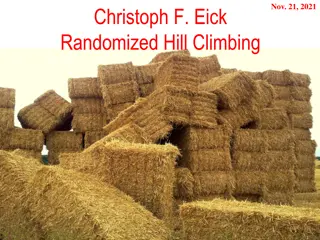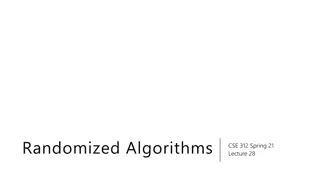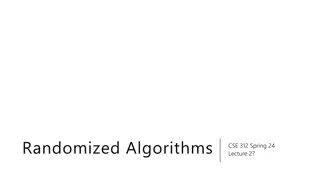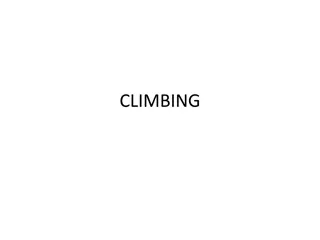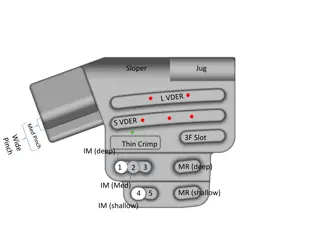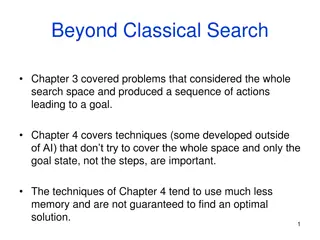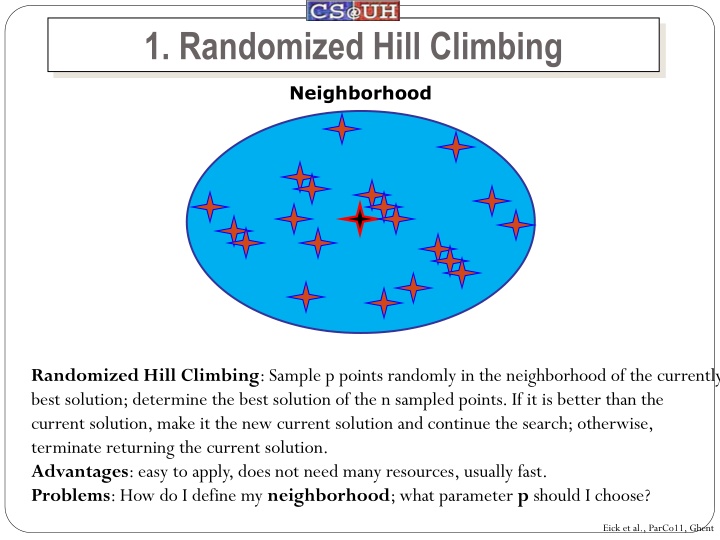
Understanding Randomized Hill Climbing and Clustering Basics
Learn about Randomized Hill Climbing, a optimization technique, and explore Clustering basics to assess the agreement of two clusterings and compute the purity of a clustering in this informative content.
Download Presentation

Please find below an Image/Link to download the presentation.
The content on the website is provided AS IS for your information and personal use only. It may not be sold, licensed, or shared on other websites without obtaining consent from the author. If you encounter any issues during the download, it is possible that the publisher has removed the file from their server.
You are allowed to download the files provided on this website for personal or commercial use, subject to the condition that they are used lawfully. All files are the property of their respective owners.
The content on the website is provided AS IS for your information and personal use only. It may not be sold, licensed, or shared on other websites without obtaining consent from the author.
E N D
Presentation Transcript
1. Randomized Hill Climbing Neighborhood Randomized Hill Climbing: Sample p points randomly in the neighborhood of the currently best solution; determine the best solution of the n sampled points. If it is better than the current solution, make it the new current solution and continue the search; otherwise, terminate returning the current solution. Advantages: easy to apply, does not need many resources, usually fast. Problems: How do I define my neighborhood; what parameter p should I choose? Eick et al., ParCo11, Ghent
Example Randomized Hill Climbing Maximizef(x,y,z)=|x-y-0.2|*|x*z-0.8|*|0.3-z*z*y| withx,y,z in [0,1] Neighborhood Design: Create solutions 50 solutions s, such that: s= (min(1, max(0,x+r1)), min(1, max(0,y+r2)), min(1, max(0, z+r3)) with r1, r2, r3 being random numbers in [-0.05,+0.05]. Eick et al., ParCo11, Ghent
Clustering Basics We assume we cluster objects 1 7 and obtain clusters: {1,2} {3} {5, 6,7}; object 4 is an outlier: The following matrix summarizes the cluster Aii:=1 if object i is not on outlier; otherwise, 0 Aij(with i<j) := 1 if object i and object j are in the same cluster; otherwise O For the example we obtain: 1 1 0 0 0 0 0 1 0 0 0 0 0 1 1 0 0 0 0 0 0 0 1 1 1 1 1 1 Idea: To assess agreement of two clusterings we compute their respective matrices and then assess in what percentages of entries they agree / disagree. 3
Purity of a Clustering X Purity(X):=Number of Majority Examples in clusters / Number of Examples that belong to clusters E.g.: consider the following R code: r<-dbscan(iris[3:4], 0.15, 3) d<-data.frame(a=iris[,3],b=iris[,4],c=iris[,5],z=factor(r$cluster)) mytable<-table(d$c,d$z) 0 1 2 3 4 5 6 setosa 2 48 0 0 0 0 0 versicolor 7 0 43 0 0 0 0 virginica 11 0 16 3 12 3 5 Remark1: there are 20 outliers in the clustering r; cluster 0 contains outliers! Purity(d)= (48+43+3+12+3+5/(150-20)=114/130=87.6% Remark2: As there are 150 examples, 20 of which our outliers, the number of examples that belong to clusters is 150-20=130; only, cluster 2 is not pure (16 viginicas do not belong to the majority class Setosa of cluster 2); all other clusters are pure. 4




